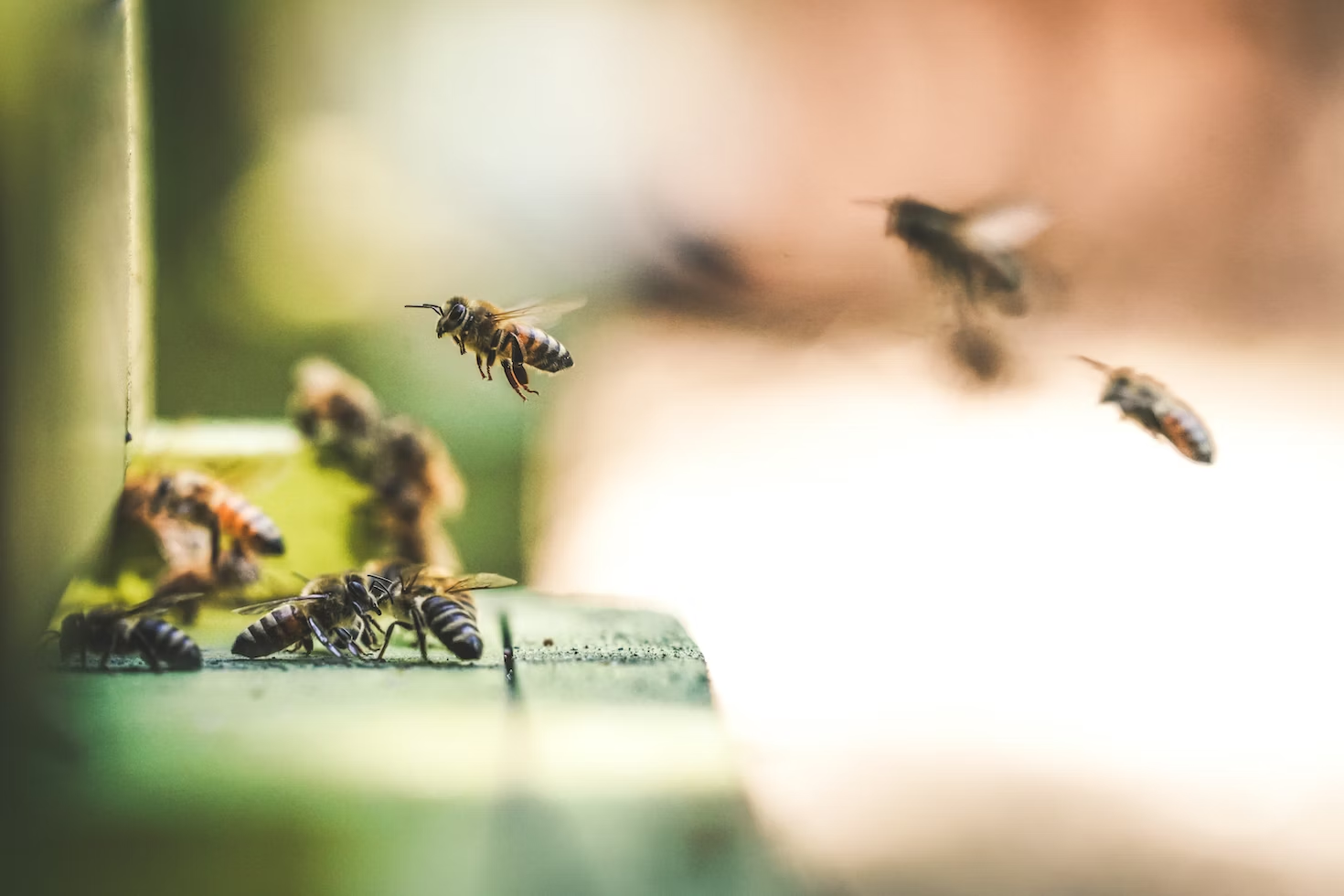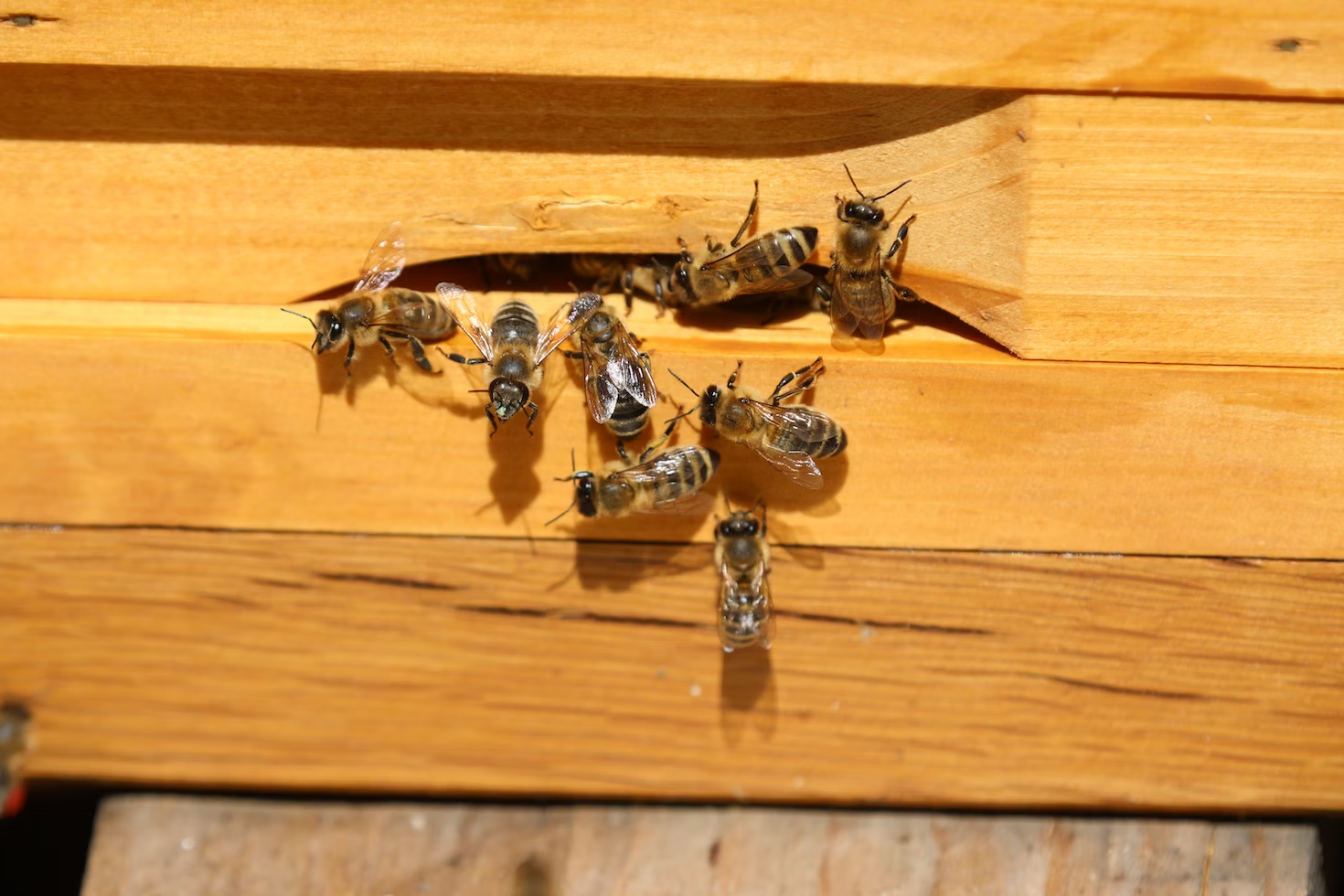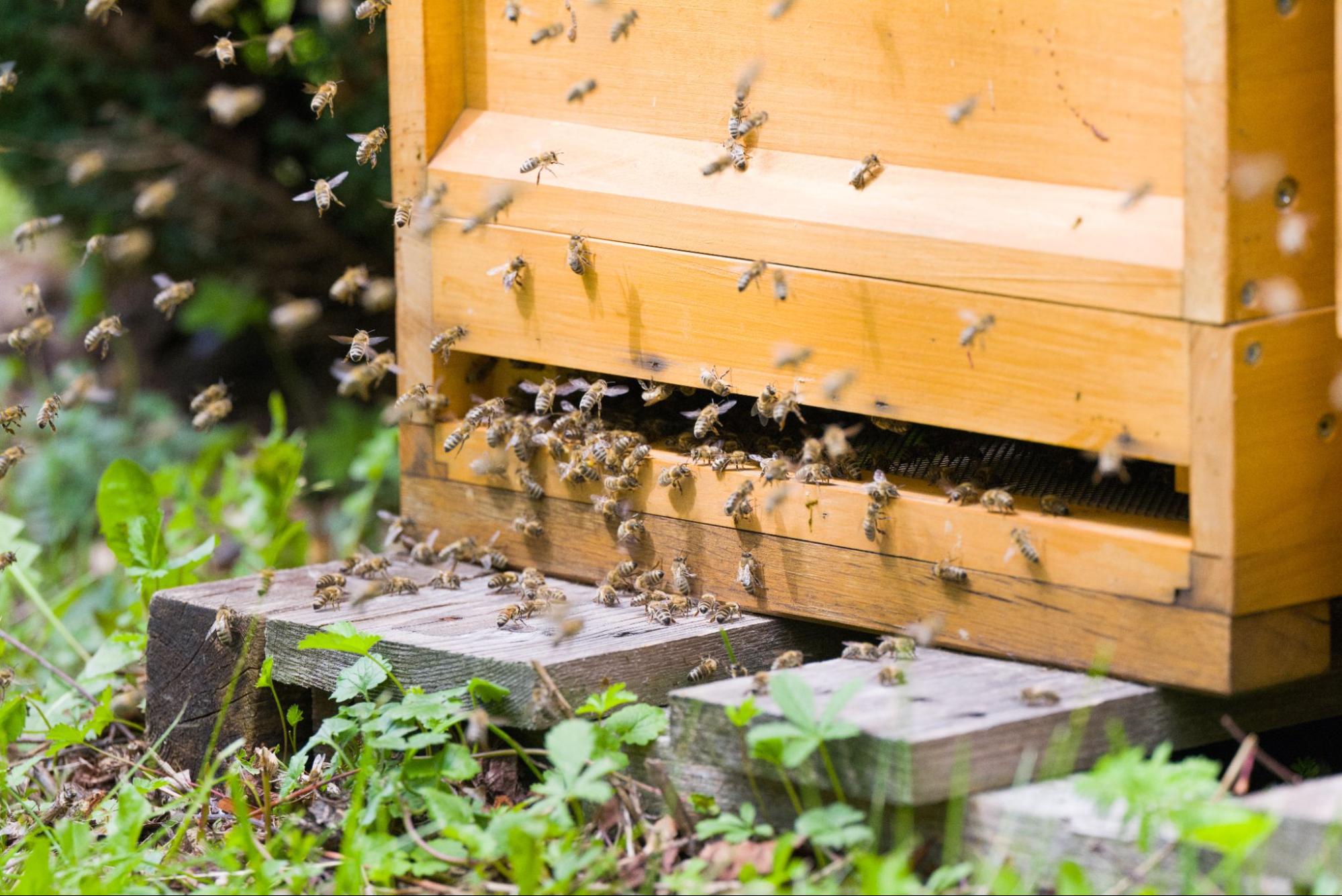How Much Land to Feed One Bee Colony?
Conventional wisdom suggests that to nourish one colony of honey bees, it takes one acre of blossoming trees, shrubs, or flowers to thrive. To promote the growth of healthy colonies, you should plan to have at least 2 acres at your disposal to build strong hives and keep enough space for your honey bee colony to thrive.
While this is a general rule of thumb, many variables are involved in the answer that varies from city to bee species to the types of environment for the hive. It may be one acre in some regions but five or more elsewhere. For example, for almond pollination, two colonies per acre are needed for a well-pollinated crop. Crop insurance policies often require this rate before they pay any claims for a poor harvest.
How Big Is an Acre?
As you plan your backyard for your bees, understanding the size of an acre is a critical first step. Visualize a football field (minus the end zones), and you’ll see that a lot of blooming flowers are needed. Your bees will ensure a good backyard crop yield for your local melons, squash, and apples, but your garden furnishes only a tiny share of the nectar needed for feeding a colony.
One acre is sufficient if there is a continuous pollen and nectar supply available from spring to fall, with sources including herbs, fruits, vegetables, bushes, clover, and flowers.
Hive Recommendations for Backyard Beekeepers
As you plan the space for your bees, particularly for new beekeepers, consider the number of hives you are capable of handling on your own.

As a general rule, we recommend starting with no more than two hives. If you have access to an acre of land in your backyard, your hive will likely be very content with that amount of space.
Build your apiary in an area on your land that is close in proximity to water and other plants and flowers. Remember that bees can travel up to five miles to forage, but having a watering hole nearby is still a great idea.
Considerations When Creating an At-Home Apiary
If you have the space for a backyard hive, it’s time to plan and design your space! Here are some important considerations to make as you create your bee yard.
Space
Most beekeepers will agree that you should maintain at least five feet of space between each hive and in every direction surrounding the hives. Additionally, be sure to place your hives in a place that doesn’t get much foot traffic during the day. As the bees leave and return to the hive during the day, they want to be left alone, so there shouldn’t be any people or animals too close by.
Local Laws and Regulations
Depending on where you live, local governments may have rules and regulations in place to protect both the bees and your neighbors. Be sure you do your research and know what’s legal and acceptable in your area before you settle on a space for the hive. If you live in an area with a homeowner’s association, check with those bylaws so you’re aware of the rules in your development.
Neighbors and Surrounding Areas
While you’re doing the environment a service by keeping bees, it’s still important to be respectful and aware of the surrounding areas and your neighbors. Beehives mean significantly having more bees in the area. Your neighbors deserve to know if there will be hundreds (or thousands) of bees in their neighborhood because of your apiary.
Alternate Locations for Beehives
If you have a small backyard and can’t justify establishing your colony there, it’s best to find a local park or rooftop to build your hives. Depending on the number of hives you want, many local establishments will happily trade space for honey so you can raise your bees.
If your city has a botanical garden, public parks, or any other secure open spaces, try there first. Hotels and parking garages are also great options. They are far away from traffic, people, and animals or pests that can pose a threat to the hives.
What’s the Most Ideal Location for a Beehive?

Open meadowland, preferably with a wetland nearby, is the best location for a bee yard and good honey yield. A bee yard surrounded by a forest does not yield a good honey crop. Dense shade from a conifer forest does not allow the growth of sun-loving nectar plants.
Some native meadow blossoms sustain a longer nectar flow. The drought-resistant, yellow sweet clover bears tiny flowers. They bloom from early July through September and produce a good honey surplus where it is grown. When they can’t find local blooms, bees sometimes travel up to five miles to find the food that they need.
The Bloom Patterns of Plants and Flowers
One acre of plants, flowers, and trees can typically feed two hives as long as the plants bloom throughout the seasons. This is why it’s so important to provide your bees with an assortment of crops that they can pollinate and forage on all year long.
Spring pollen comes from willow, aspen, maple, and alder trees, but each of these is only good for a few weeks. Dandelions bloom for about three weeks, followed by clover. Fruit trees are rich in nectar and pollen, but they last only a few weeks.
Black locusts, basswoods, and other trees can furnish nectar from millions of blossoms for a large tree, but the bloom time is short. Even with these trees, an untimely rain may wash out most of the nectar.
Supplementing Feeds for Honey Bees
If you have more than two hives on one acre, it can be challenging to feed and sustain the bees without assisting them with an additional food source.
You can’t go to the store and buy a bag of “Purina Bee Chow,” although beekeepers do occasionally feed supplements when their hives don’t have sufficient natural forage. Sugar syrup is fed to bees to provide calories to help them survive. In order to raise and feed their brood, bees need protein, which is pollen or a rich pollen substitute.
This supplemental feeding is useful for a short time only and is primarily used when they need lots of bees ready to pollinate crops before the optimum bloom time.
Beekeeping in London Proper
A 2012 report from London highlights the need for adequate foraging areas for a good honey yield. Beekeeping has become popular in European cities as well as in New York City.
A London business group called “InMidtown” wants to supply more hives to new urban beekeepers to increase the production of honey. Although it sounds like a good idea, the London Beekeepers Association opposes this and claims that there are already too many hives in the London region.
With 3,337 registered hives, that means 5.5 colonies per square mile, and they limit honey production to only 37 pounds per hive—way below the national average. The InMidtown group is busy planting honey bee forage in whatever space they can find. Still, the beekeepers' group prefers limiting hives to increase the honey yield per hive and educating the public about sound beekeeping practices.
FAQs: How Much Land You Need for a Hive
Get the answers to your buzzing questions about the necessary space and land for bees here.
How far should a beehive be from your house?
Avoid putting a hive in close proximity to your house or any shared property line or fence. The minimum space between your home and your bees should be 20 feet.
Where should I avoid putting a hive?
Areas that are prone to flooding, high winds, or a lack of daily sun are the least desirable areas for bees.
What is the recommended number of plants for a hive to thrive?
Aim to have an acre of plants, flowers, and trees that continually bloom through the seasons. A higher variety of vegetation ensures a steady supply of nectar and pollen.
The Final Buzz on Beehives per Acre

Beekeeping is filled with challenges, and beekeepers have to be aware of the benefits and drawbacks of both an at-home apiary and renting a space for their hives. Generally, one acre of land should house at most two hives. However, the natural behavior of bees will show you what’s truly feasible in your area.
If you’re new to beekeeping and need more guidance, explore our blog for educational resources and tons of helpful information about beekeeping. We’re here to help!

